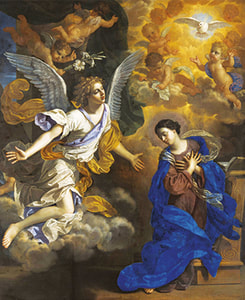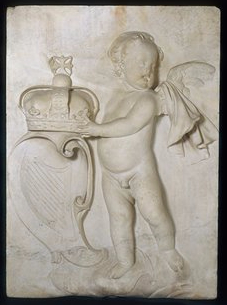|
When the monarchy was restored in 1660, so was the Church of England. During the Commonwealth, the Puritans had targetted art in churches, removing images they deemed inappropriate for their style of worship. Whilst there was a desperate need to restore the churches and cathedrals, there was widespread debate about the use of artwork. Some thought elaborate decoration was suitable for a religious setting, whereas, others argued it would distract from the worship of God. It tended to be the Catholics that embraced art and lavishly decorated their buildings. Although Charles II was Protestant, his wife’s catholicism meant he was more lenient than past monarchs on those who did not conform to the Church of England. Catherine of Braganza and Mary of Modena (1658-1718), James II’s second wife, were permitted the freedom to worship in Catholic chapels at St James’s Palace and Somerset House. Unfortunately, the alleged Catholic conspiracy to assassinate Charles in the 1678 Popish Plot caused anti-Catholic hostility across the country. When the Catholic James II became king in 1685, the country remained officially Protestant, however, James began restoring Catholic places of worship. James ordered paintings for his newly opened chapels, such as the one at Whitehall Palace that opened on Christmas Day in 1686. The chapel contained a 12-metre high marble altarpiece containing a painting of The Annunciation by Benedetto Gennari (1633-1715). The angel Gabriel visiting the Virgin Mary to tell her she will be the mother of the Son of God is a deeply religious subject in Catholic art, however, someone of Protestant faith would have been more likely to hang the painting in an art gallery. The Whitehall Palace chapel altarpiece was built by Grinling Gibbons (1648-1721) and Arnold Quellin (1653-86) on the instruction of James II. It took a total of five months and 50 craftspeople to complete the task and two surviving marble panels reveal the Baroque style of stonemasonry. Putti holding a crown and the coats of arms of Scotland and Ireland indicated it was both a Catholic and royal establishment. The Chapel, however, was short-lived since it was closed when the Protestants William (1650-1701) and Mary (1662-94) came to the throne. Read the full article here This blog post was published with the permission of the author, Hazel Stainer. www.hazelstainer.wordpress.com
0 Comments
Your comment will be posted after it is approved.
Leave a Reply. |
©Copyright
We are happy for you to use any material found here, however, please acknowledge the source: www.gantshillurc.co.uk AuthorRev'd Martin Wheadon Archives
June 2024
Categories
All
|


 RSS Feed
RSS Feed